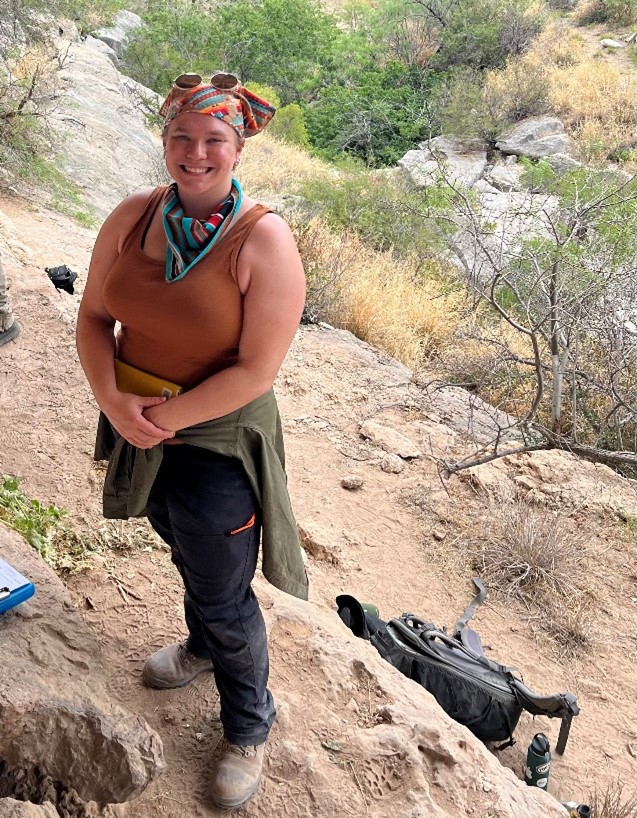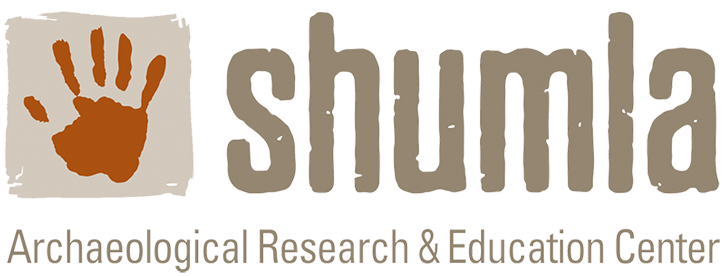Shumla Intern Blog: Madeline Okkonen
Introduction
Hi everyone! My name is Madeline Okkonen, I had the privilege of being an intern with Shumla from March-May 2023. During my time at Shumla, I worked on an archive research and mapping project, as well as joined the crew for fieldwork training in the Shumla Method of Rock Art Documentation. I also trained using digital microscopy for paint stratigraphy analysis and had the wonderful opportunity to observe the procedure for radiocarbon dating a rock art mural conducted by Science Director: Dr. Karen Steelman as part of the Hearthstone Project.
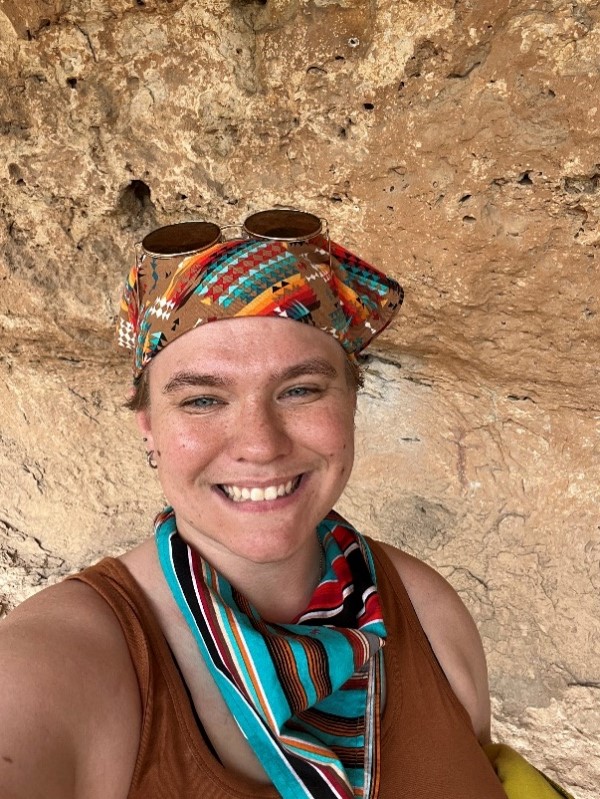
A little about me: I graduated from Grand Valley State University in 2020 with a Geology Major and a minor in Archaeology. For the past few years, I’ve been working in the field of CRM (cultural resource management) archaeology, which has taken me on adventures digging holes or shovel test pits all over the U.S. Between digging said shovel tests and being eaten by fire ants, I kept an eye out for an opportunity that would help me expand my ideas for graduate school and tap into my interests in conservation, art, and archaeology. In 2022, I discovered Shumla and after reading about their research, I knew I had to join them in their mission to preserve and protect rock art sites. Now, in 2023, I had the privilege of working on its amazing team as an Archaeological Intern!
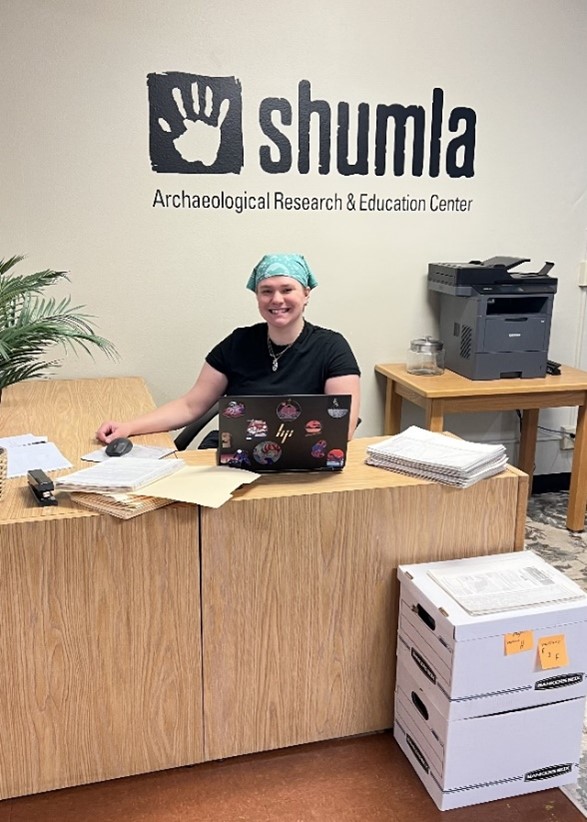
Archival Project
My first month with Shumla was spent at Shumla’s San Marcos office, nestled in the delightfully rainy hill country of Texas, working under the supervision of Shumla’s Senior Preservation Archaeologist: Dr. Diana Radillo Rolón and Shumla’s Preservation Archaeologist Seamus Anderson. Here I worked on an archival and mapping project that involved scanning and digitizing hundreds of documents from rock art sites in Mexico and mapping the sites labeled as Pecos River Style in ArcMap.
The collection of files that formed the basis of Shumla’s mapping project are an original collection donated by Terry Sayther. Terry’s passion for Mexican rock art took him on adventures all around Mexico and his extensive work resulted in an impressive collection of maps, reports, journals, sketches, photos, and slides documenting over 150 Mexican rock art sites. This collection was donated to Shumla Archaeological Research & Education Center in July of 2021 and Missy Harrington, Shumla’s Librarian and Technical Editor, completed an initial inventory of the collection before it was transported to the San Marcos office for scanning and processing.
To reiterate, the scope of this archival project was to organize and assess the donated materials and digitize the rock art site files and photos. Additionally, any sites labeled as containing Pecos River Style (PRS) rock art were to be separated, assessed, and then mapped in ArcMap.
Working with Seamus Anderson, I started this project by organizing the sites into an Excel spreadsheet. Then, the contents of each site folder (site forms, photos, notes, and maps) were scanned and uploaded to Shumla’s server. In addition to the many paper forms and printed photos, Terry Sayther kept many photo collections as slides, which were scanned and digitized by Seamus at the Texas State University Library with the assistance of Todd Peters the Administrative Librarian.
Mapping Project
Out of the 168 site files, 32 were marked by Terry as possibly containing PRS rock art. These files were separated from the total collection as a focus for Shumla’s mapping project. These site forms and photos were examined by Dr. Rolón and 28 were confirmed as containing PRS. An additional site was later added to the list of PRS upon further examination – bringing the total number of PRS sites to 29 in total!
After the PRS sites were separated, I examined each file for site coordinates and additional location information (state, county, site coordinates, etc.) and related the data to topographic maps of Mexico. Using these topographic maps alongside Google Earth, I was able to verify and check the coordinates of each site before entering the data into ArcMap. After cleaning up the data and finding some appropriate base-maps, I entered the data in ArcMap and created two maps. The first map uses the satellite imagery base-map and the second uses the world topography base-map.
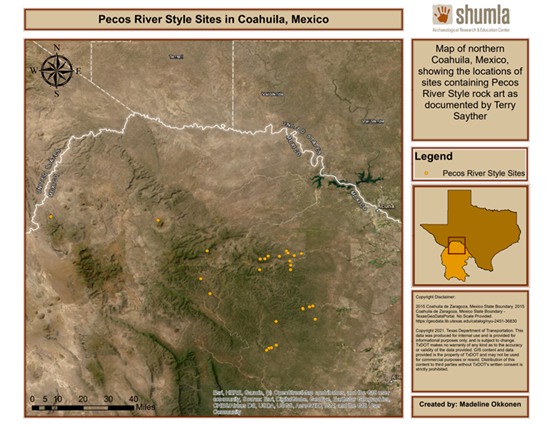
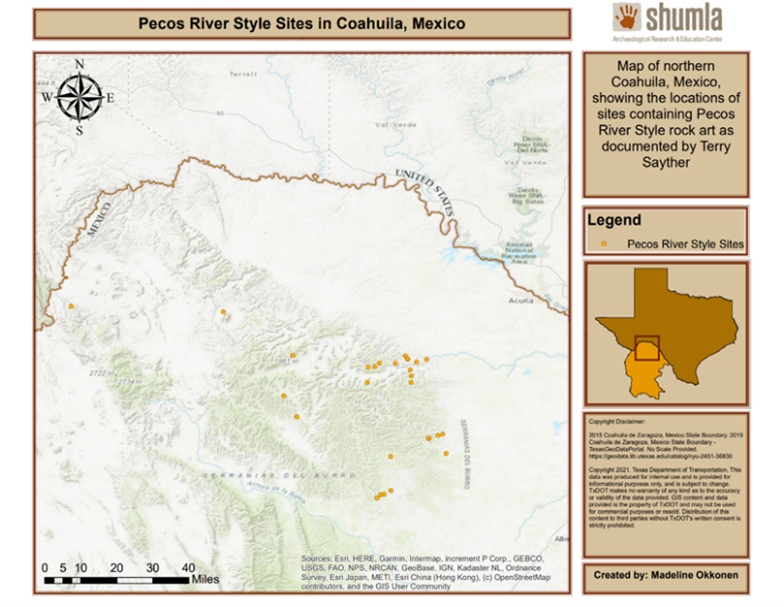
These maps give an important overview of some of the PRS rock art sites located in northern Mexico. While they are by no means comprehensive (remember we are limited to data from sites that Terry personally visited!), they are helpful tools in understanding the distribution of some of the PRS sites in Coahuila, and even how they relate to certain landforms such as canyon and river systems!
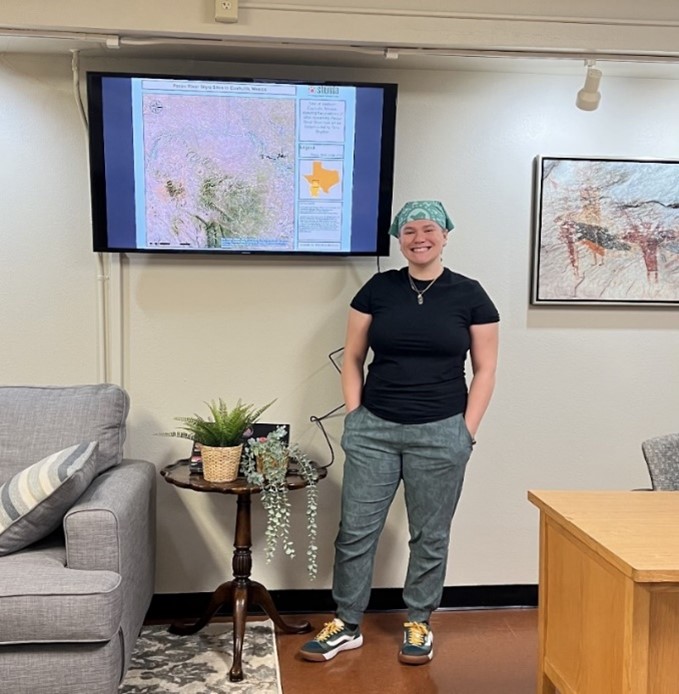
Baseline Documentation – The Alexandria Project
The beginning of May marked the start of the field season at Shumla, and we kicked things off by traveling to the Lower Pecos Canyonlands to conduct baseline documentation at a significant PRS rock art site along the Pecos River. The Shumla Campus was the base of operations during the first week of fieldwork. The rolling hills of the Shumla Campus provided excellent sunset views over the desert and even the opportunity to see some wild javelinas! Spot the Wild Javelina!
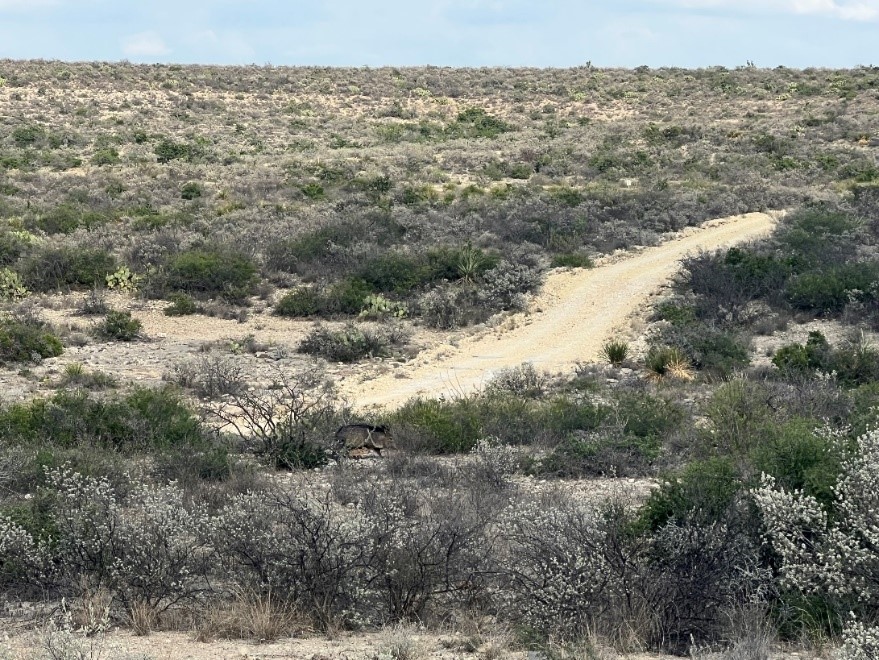
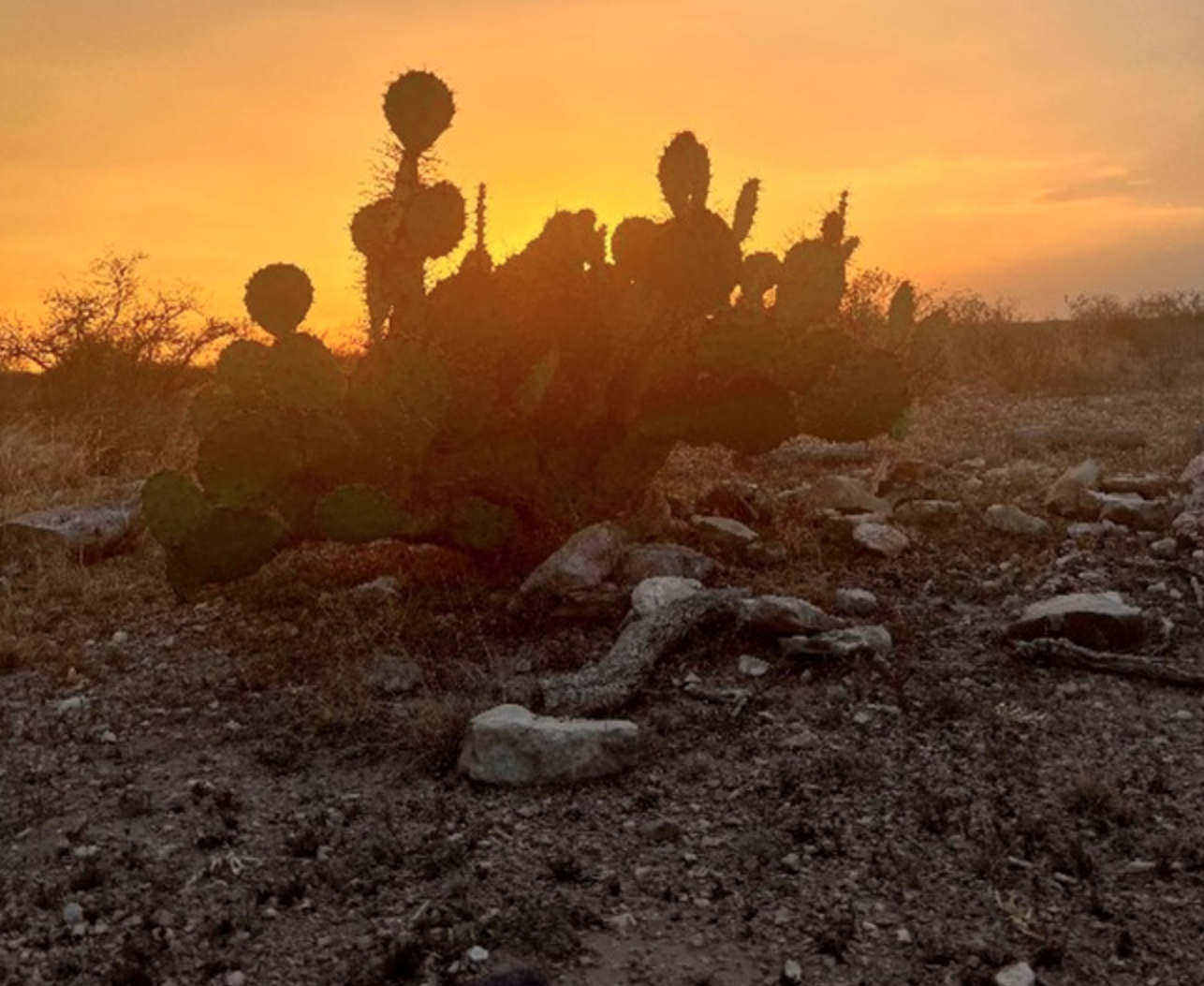
Baseline Documentation
I assisted with baseline documentation of an incredible site in a small side canyon overlooking the Pecos River. The sounds of running water could be heard throughout the site providing natural music to our process. A short hike from the parking spot, the massive mural (spanning over forty-three meters from end to end) towered above us; processions of dark anthropomorphs or human-like figures marking the wall.
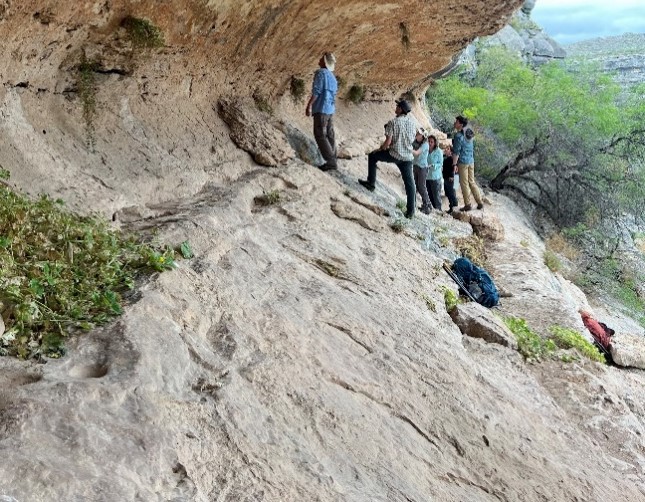
Digital Microscopy and Stratigraphic Analysis
The second week of fieldwork took place at 41VV1205, a Hearthstone Project site. This site was rather difficult to access since it was located high on the side of a canyon wall! The walk to the site involved climbing up and down canyons filled with prickly pear cactus and the ever-present tasajillo. But the adventurous trek rewarded us with great views from the rockshelter and an excellent site to conduct some stratigraphic analysis and radiocarbon dating.
View from 41VV1205
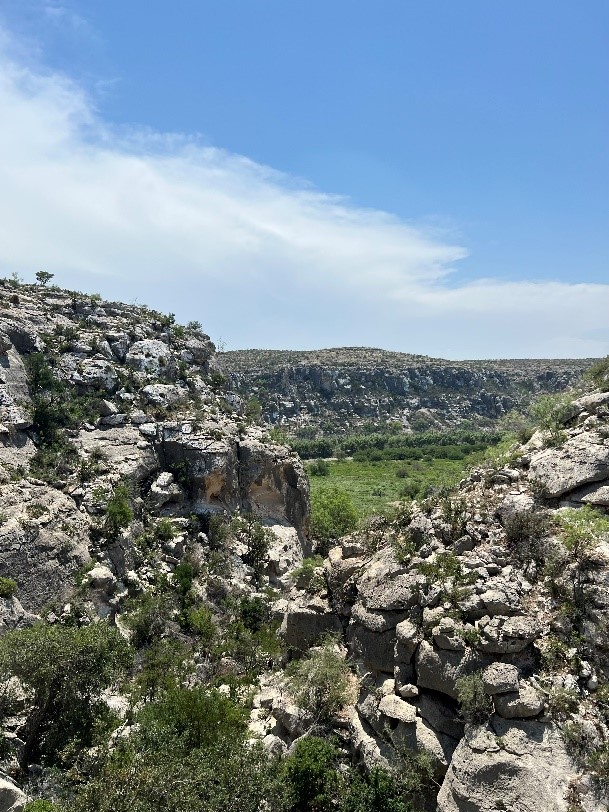
As Dr. Karen Steelman, Shumla’s Science Director, prepared for radiocarbon dating fieldwork, I assisted the rest of the crew and trained in figure photography and digital microscopy using a DinoLite microscope. This handheld microscope connects to a tablet and allows us to take microscopic photos, what we call photomicrographs, of the paint on the rock wall. Prior to fieldwork, certain parts of the mural were identified as possible locations where different colors of paint overlap. Once in the field, we zeroed in on those locations with the microscope to collect photomicrographs, which we later analyzed in the lab.
This process of photographing paint stratigraphy starts with a photo of the entire area of the figure for overall context, and we slowly photograph smaller and smaller portions of the figure up to the tiny photomicrographs. This allows for an easier analysis of the figure and paint layers, while examining the photo series during post-processing in the lab. For more information about this process, check out Shumla’s recent Hearthstone Project blogs!
The padded DinoLite microscope must be held very carefully and gently against the mural to not scrape or disturb the paint.
After completing the digital microscopy, it was time for Dr. Steelman to complete the process for radiocarbon dating. We carefully photographed each sampling location before and after samples were collected and marked each location on a physical map of the mural. Analysis using plasma oxidation is currently underway at Shumla’s Archaeological Chemistry Laboratory in Comstock.
For more information on plasma oxidation and radiocarbon dating, check out the following Shumla blogs: Shumla’s Chemistry Lab Part I: Plasma Oxidation & Radiocarbon Dating , Keep Calm and Love Plasma Oxidation
The process of photographing each figure starts with an overview of the panel and moves closer and closer until you are taking microscopic photos.
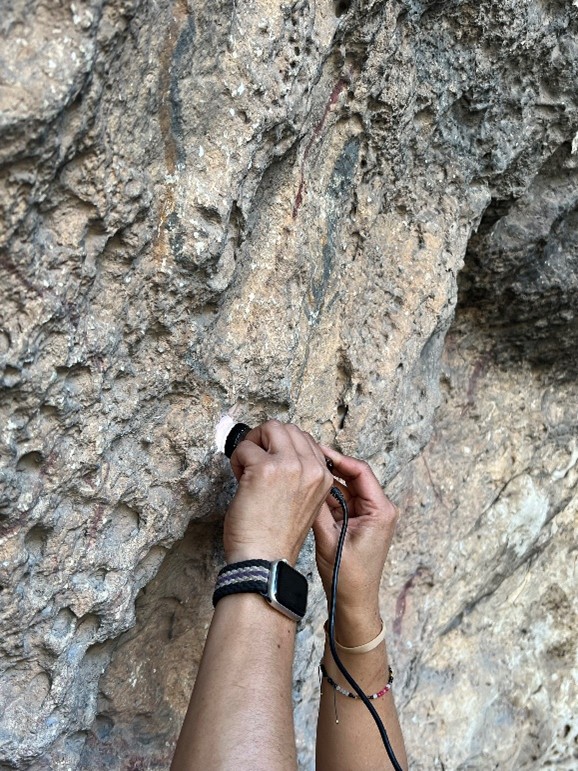
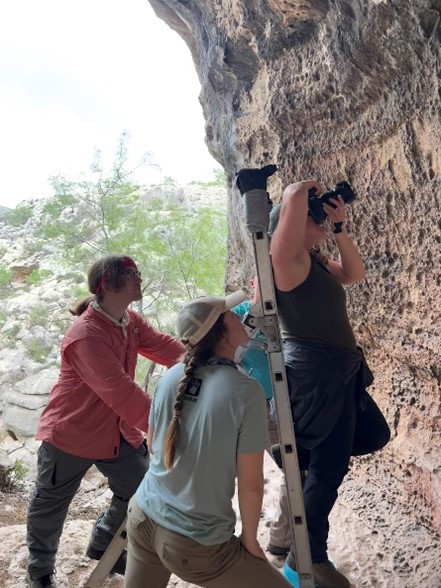
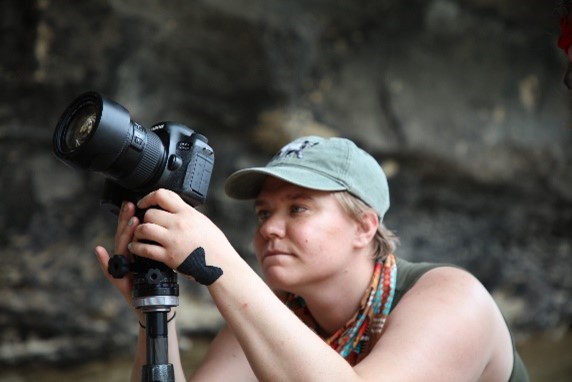
The digital microscopy and radiocarbon dating fieldwork only took a couple of days in the field and the rest of the time I got to work with the team post-processing the data in the Comstock lab. I learned how to identify areas of paint layering in the photomicrographs during my stratigraphic analysis training, and even got to generate some GigaPans from the PRS rock art site we documented the previous week. During these great couple of weeks, I got to know the Shumla team even better and appreciate the dedicated work they do to preserve these ancient, endangered murals
Other Rock Art Sites
While staying in Comstock, I was able to visit a couple of other rock art sites in the region: the Fate Bell Shelter (41VV0074) and Running Horse mural (41VV0226) at Seminole Canyon State Park & Historic Site. My tour of Fate Bell Shelter was with the wonderful volunteers at the State Park and my tour of Running Horse I was able to tag-along with Shumla Treks guided by the knowledgeable Katie Wilson, Shumla Preservation Archaeologist and Outreach Coordinator.
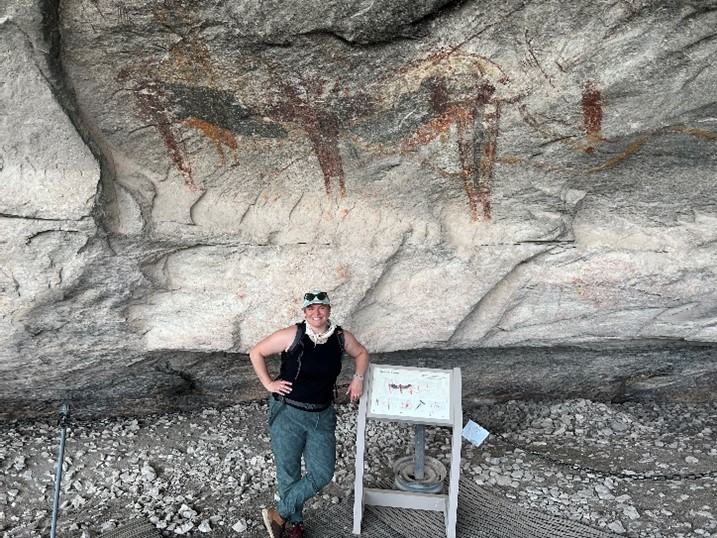
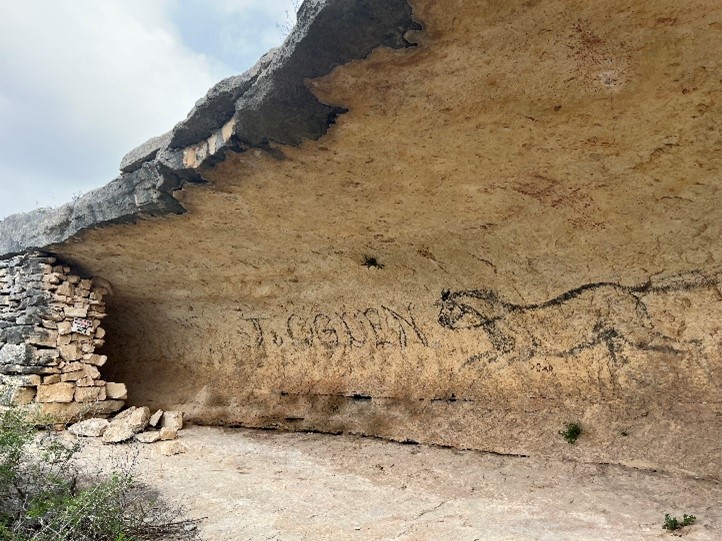
Back to San Marcos
After an amazing two weeks in the Lower Pecos, it was time for me and the other San Marcos-based crew to say our goodbyes and head back north, where I rounded off my internship with some additional archival work as well as more GigaPan and SfM training.
Goodbye and Thank You!
My ten weeks with Shumla, training and working with the Shumla crew, was a fantastic experience that I will never forget. I had many wonderful opportunities to converse with the dedicated staff of Shumla and other guests at the sites to pick their brains about conservation and archaeology. My training in Shumla’s methods of documentation, as well as the technical skills I learned, will be an amazing asset moving forward in my career. I hope my future adventures will bring me back to the Lower Pecos and the rock art that will forever hold a place in my heart.
Thank you to the amazing Shumla staff and crew (Carolyn, Diana, Seamus, Rudy, Audrey, Karen, Missy, Katie and Jessica and Veronica and everyone else I met during my stay!) for welcoming me and answering my many questions during my time here.
Thanks for reading!
